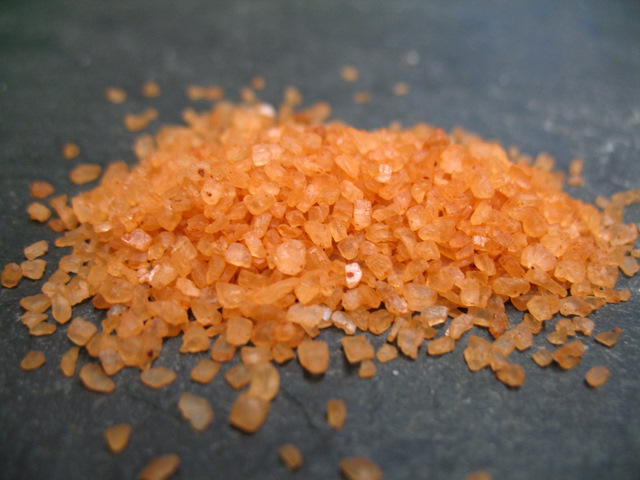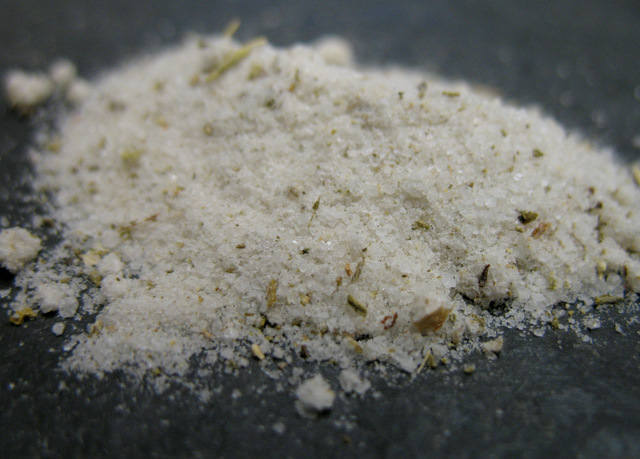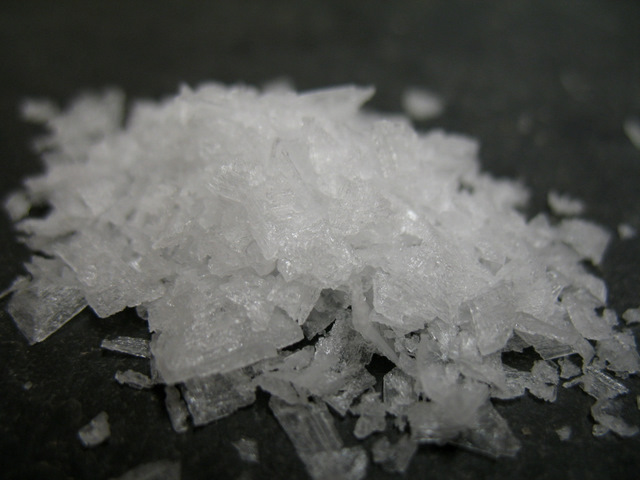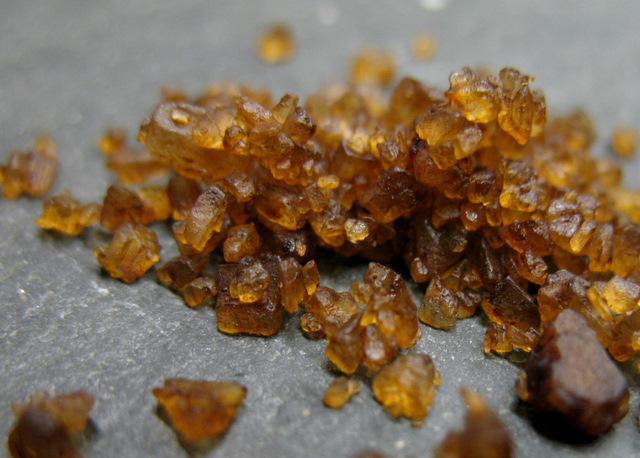In my first installment on the subject of salt, I touched on why this mineral is an important component of our diet and why it has played such a critical role in human history. Now, with access to salt in abundance, we have the luxury of focusing not just on sourcing it but on distinguishing between and even augmenting different varieties.
Here at the shop, we have many kinds of salt, sourced from all over the world. It can be daunting to try to choose between the lot of them so, when Formaggio Kitchen's owner, Ihsan, recently opened a number of them for a class, I jumped at the opportunity to do a little tasting across varieties and types, hitting many of the ones I had never tried before. Here are the results of my research and some of my tasting notes for others who might be interested in exploring the wide variety of salts that are now available to us:
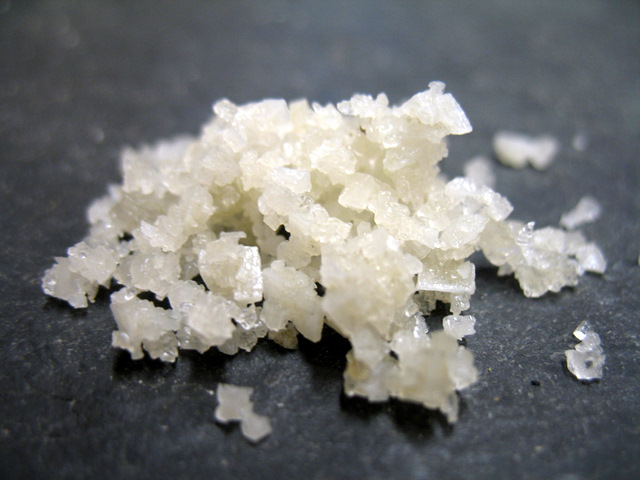 Le Paludier Gros Gris Sel
Le Paludier Gros Gris Sel
A. Le Paludier Gros Gris Sel – Guérande refers to both a medieval town and a peninsula in Brittany, in the northwestern part of France. Guérande is renowned for its salt marshes and Le Paludier salt is harvested in this region by independent salt producers (paludiers). Le Paludier packages both fleur de sel and sel gris (grey salt). What is the difference between the two? Fleur de sel is harvested from water on top of the salt marshes, whereas sel gris is harvested from the bottom. It is no surprise, therefore, that the former is white in color while the latter is grey, reflecting a higher level of “impurities” or minerals. In many respects, it can be likened to the differences between white sugar and brown sugar. This particular Paludier salt is the coarse version of their sel gris. It is certified organic, is large in grain and the moistest of the salts I tasted. Straight up, it reminded me of briney oysters. A comparable salt, but from the island of Noirmoutier, just south of Guérande is the gros sel de Noirmoutier.
B. Alaea Sea Salt – This salt comes to us from Hawaii and our former catering chef, Tacy, who is from Hawaii says she always notices the box when it comes in because it looks like a care package from her mom. Alaea refers to a red, Hawaiian clay and trace amounts in the salt give it its unusual color and also translates to additional iron oxide. Tasting this salt, I found it bright and the most lemony of the bunch. Not surprising then, to find that it is recommended on Kalua pig (a pig cooked in the ground) or poke, which Tacy tells me is akin to ceviche – usually made with chunks of tuna, it is a very popular Hawaiian dish. This salt comes from Tacy’s home island, Oahu.
C. Truffle Salt – This salt comes to us from Italy and each jar is 5% black summer truffle. Other salts exist out there with a higher truffle content but, to be honest, I don’t think I would want to go much higher. As it is, this 5% truffle salt is extraordinarily fragrant and flavorful. When inviting other staff members to taste through the salts, I recommended tasting this last as it was the most potent of the group. In fact, in a pleasantly surprising way, the flavor lingered in my mouth for the rest of the day. The possibilities here are pretty extensive – I can easily imagine sprinkling a touch of this salt on top of pasta dishes, meats or with a dot of honey, on top of a cheese.
D. Profumo del Chianti – This salt blend comes to us from the famed butcher and restaurateur, Dario Cecchini, who is based in Tuscany. It contains finely ground Italian sea salt and aromatic herbs, including rosemary and lavender that are native to the hillsides of Chianti. To me, this was one of the softer, lighter salts of the group - perfect because it allowed the delicate herb flavors to come through. I could swear that there was a hint of truffle in there too.
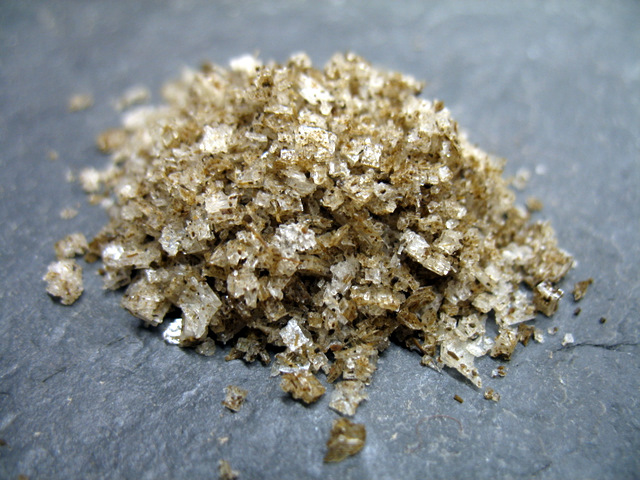
Noirmoutier Fleur de Sel au Thym
E. Noirmoutier Fleur de Sel au Thym – Noirmoutier-en-l‘Île is an island situated just off the French coast, a short distance south of Guérande. Fleur de sel harvested from the area’s salt marshes is combined in a 97% salt, 3% thyme blend. As with the Profumo del Chianti, I found this salt to be light, allowing the herbiness of the thyme to come through. Personally, I strongly associate thyme with roast chicken (because my mother adds a good amount of thyme to her delicious bread stuffing), so chicken jumped immediately to mind when I tasted this salt. Imagine a chicken sandwich made with a slather of butter and sprinkle of this fleur de sel.
F. Maldon Sea Salt – Based in Maldon, Essex, just to the east of London, the family behind Maldon salt has been in the business since 1882. I first started using this salt when I lived in England. It is used by many of the top chefs there and it isn’t hard to see why. To me, it tastes very clean, kind of like salt water mist - you know, when you’re speeding along in a boat and a bit of fine spray blows into your face? It comes in large flakes and is quite dry as compared to many of the French salts. This is probably due to the slightly different method of harvesting. The salt is drawn from the Blackwater River, one of the most saline rivers in England. Water from the river is syphoned off into large tanks where sediment is allowed to settle. The water is then transferred to salt pans where it is brought to a rolling boil. Any foam that develops is skimmed off the top and then the water is kept on the heat for an additional 15-16 hours, allowing the water to evaporate and the pyramid-shaped salt crystals to form. Harvesters use traditional, long-handled rakes to collect the salt and it is allowed to drain before being transferred to drying hoppers. Maldon salt is certified organic.
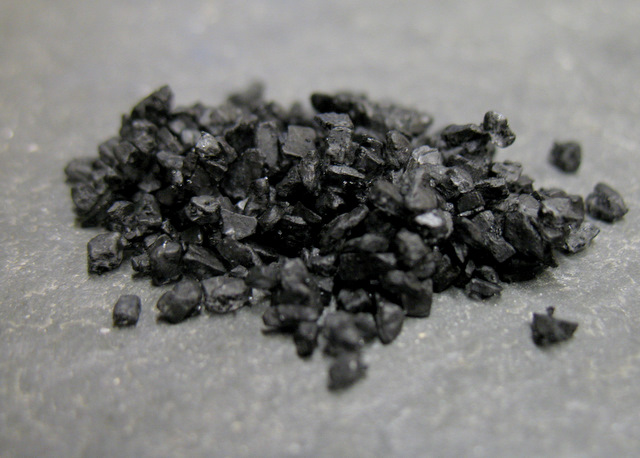 Black Lava Sea Salt
Black Lava Sea Salt
G. Black Lava Salt – This is the other salt that comes to us from Hawaii and Tacy tells me that it must come from the “Big Island,” Hawai'i (as distinguished from the state as a whole). To me, this salt tasted slightly sulphuric but, interestingly enough, also a little bit sweet. It is dramatic looking and would look fantastic if you were plating something light colored – be it white fish or even a few grains on top of a vanilla frosted cupcake or vanilla pudding.
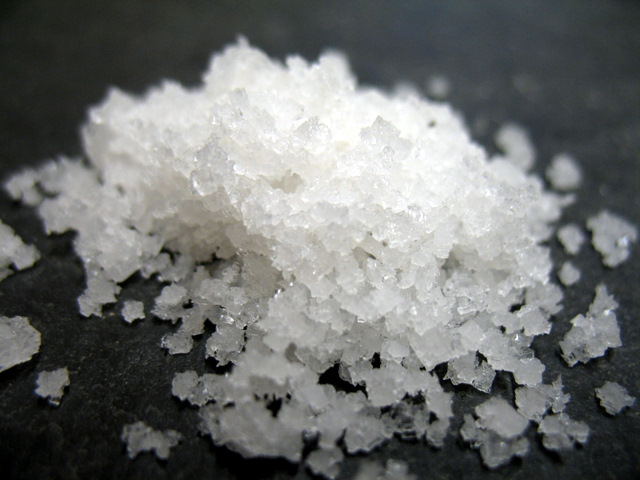 Le Paludier Fleur de Sel de Guérande
Le Paludier Fleur de Sel de Guérande
H. Le Paludier Fleur de Sel de Guérande – I have already touched on Le Paludier’s salt operations and the differences between fleur de sel and sel gris – this is their fleur de sel. Ocean water is allowed to evaporate in shallow canals over natural clay beds. The salt is then delicately raked into piles and left to dry in the sun. Fleur de sel is Paludier’s flagship product – indeed, Brittany as a whole is renowned for its fleur de sel. To me, this salt had a very straight salinity and made me think of swimming and accidentally getting a mouthful of seawater – in a good way. This salt is drier than the sel gris (A) but compared to the other salts, it is still fairly moist.
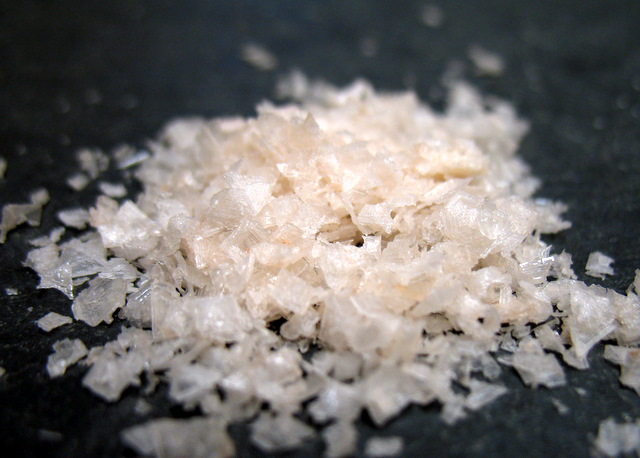
Murray River Salt
I. Murray River Salt – Where is Murray River, you ask? Murray River is located in the southern part of Australia and is that country’s longest river. The Murray River estuary, also known as the Murray-Darling Basin, is quite shallow and underground salt deposits make it an ideal place to harvest salt. Its delicate pink color comes from a red pigment released by algae that have adapted to the briny waters. With this salt, I found it was quite delicate up front but the saltiness came through in an almost delayed reaction. It’s perfect for finishing a dish and I have used a sprinkle of this on top of my poached eggs in the morning. That said, I could also imagine a few flakes sprinkled on top of a chocolate or a caramel.
J. Smoked Viking Sea Salt – I was very curious to try this salt, as were several of my colleagues who were also unfamiliar with it. While rivaling the truffle salt in strength of flavor, it provided a very different profile. Visually, it looks almost like resin and I thought back to the mosquito trapped in amber, so key to the plot line of Jurassic Park. In terms of flavor, it is almost like tasting bacon without the porky flavor. Why? Because it is smoked over a variety of woods. Needless to say, this salt would be perfect on meats and would add an unusual flavor to sandwiches or soups. It comes to us from Denmark.
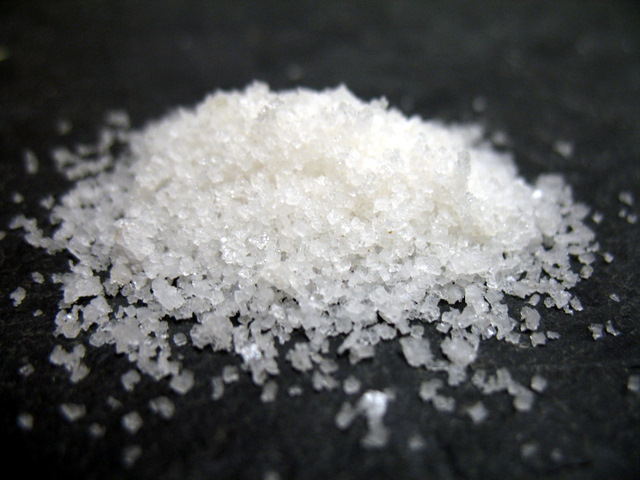
Le Sel d'Isabelle
K. Le Sel d’Isabelle Fleur de Sel Île de Ré – Last but not least, another fleur de sel. This one comes from the Ile de Ré – again, moving a little further south along the French Atlantic coast from Noirmoutier. The company, Le Sel d’Isabelle, was founded only in 2005. However, its founder, Isabelle Dussoulier, is the daughter of a salt producer and carries on her family’s traditions. Isabelle’s salt is more finely ground than Le Paludier fleur de sel and was also the drier of the two. Interestingly, when I tried Le Sel d’Isabelle, I could swear there was a faint limey flavor to the salt. As well, not counting the flavored salts, this was the salt that to me had the longest finish. That said, one might allow a little bit for the fact that I had already tasted ten salts before it!
Well, that’s the run down! Ultimately, if you were to dissolve the straight, unflavored salts in water, I would be surprised if anyone could tell them apart. However, in their concentrated form there are definite differences of texture and flavor. For this reason, should you decide to make salt explorations of your own, I would keep the slightly more unusual salts for finishing a dish or for instances where your salt will really come to the fore. Maldon salt is perhaps the exception for me – sometimes I use it when baking.
Note: one final method of harvesting salt that I have not touched on here is from salt deposits in the earth. Such deposits are generally believed to be the legacy of oceans and seas that existed millions of years ago. They exist around the world from New York state, to Cheshire, England, to Cardona, Spain, to the Himalayas. At Formaggio Kitchen, we do not currently stock any salts that are harvested this way.



